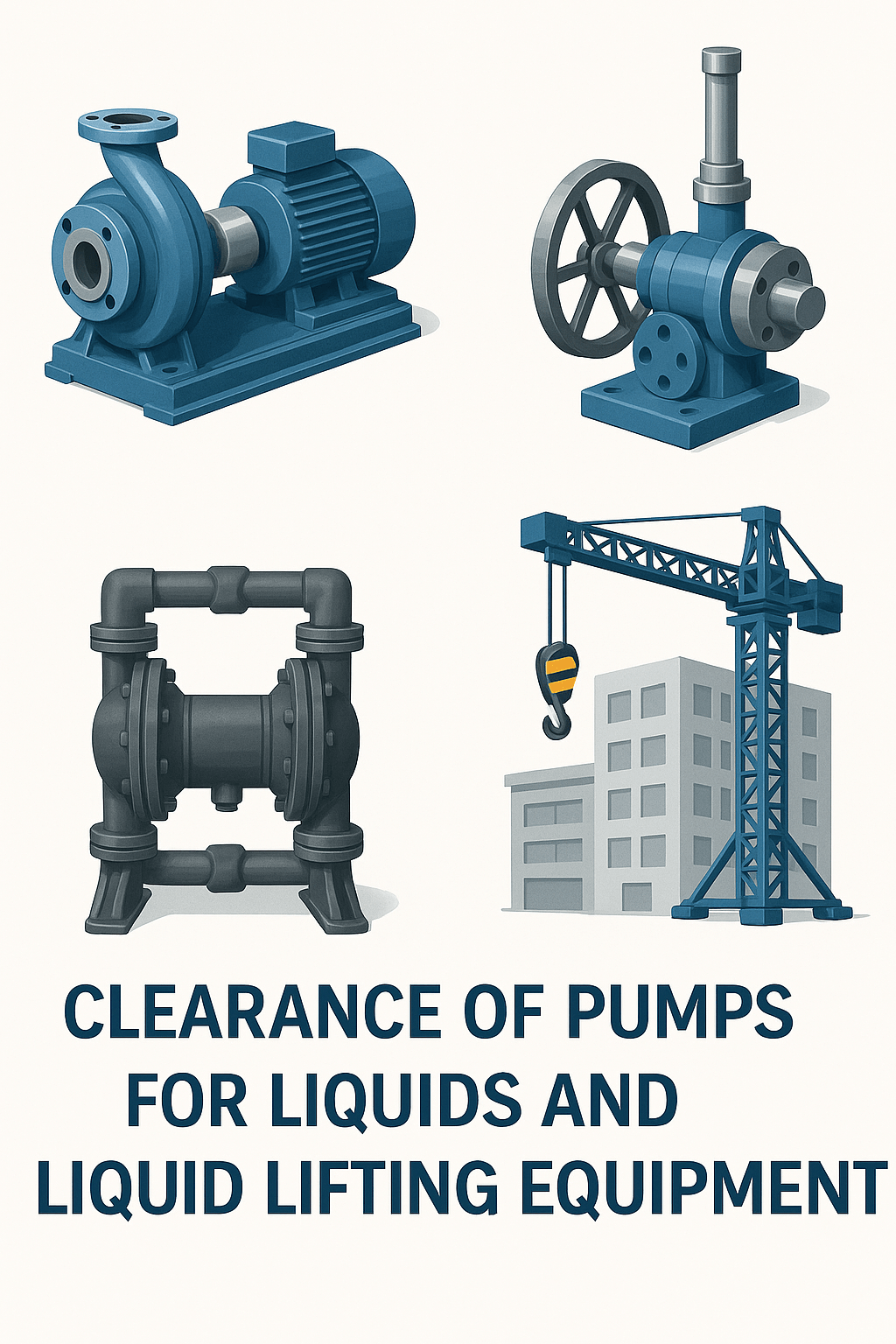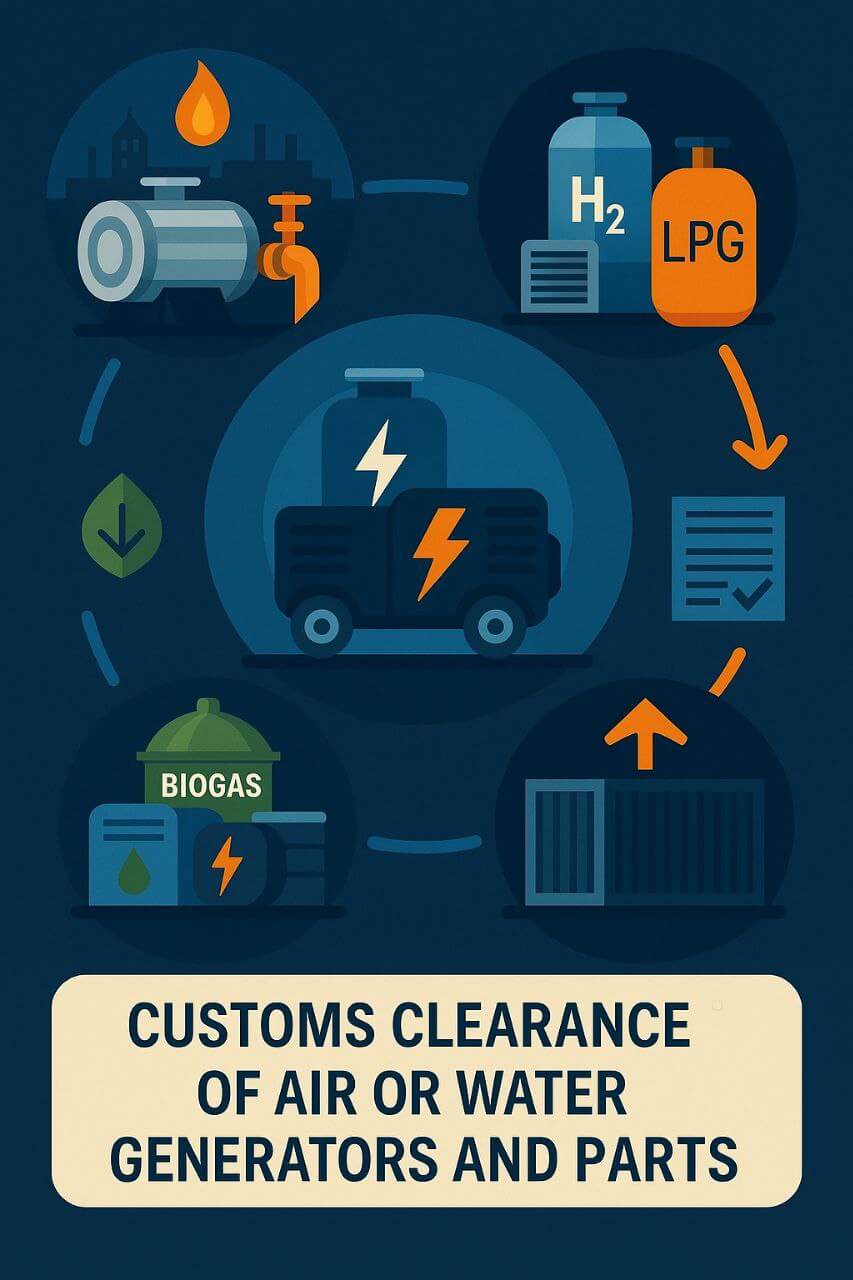Clearance of Pumps for Liquids, Liquid Elevators (HS + Documents and Permits)

To estimate the time and cost of clearing various water pumps and liquid elevators, contact the experts at Saba Tarkhis.
Immediate Free Consultation1) Types of Water Pumps and Liquid Elevators
Centrifugal Pumps: These pumps are used to move large volumes of water at low pressures. They are commonly used in irrigation systems, water treatment plants, and urban and rural water supply systems.
Piston Pumps: These pumps are suitable for transferring liquids at high pressures and are mostly used in the oil and gas industry, hydraulic systems, and for moving high-viscosity liquids.
Diaphragm Pumps: Used for transferring viscous liquids or liquids containing solid particles. Due to high resistance to corrosive materials and the ability to handle sensitive liquids, these pumps are used in chemical, pharmaceutical, and food industries.
Magnetic Pumps: These pumps are used for moving sensitive and hazardous liquids such as acids and alkalis. The chemical and pharmaceutical industries are major users of this type of pump.
Liquid Elevators: These devices are used to move liquids to higher elevations. They are used in the construction industry, water supply systems for high-altitude areas, and civil engineering projects.
2) Applications and Advantages of Water Pumps and Liquid Elevators
Agricultural industry:
Pressurized irrigation: In modern irrigation systems that require supplying water at a specified and controlled pressure, centrifugal pumps are widely used due to their capability to move large volumes of water at low to medium pressure.
Moving water from underground sources: For transferring water from wells or underground sources to the surface and then distributing it to farms, the use of piston pumps is common. These pumps, by creating high pressure, bring water from depths to the surface and transfer it to irrigation networks.
Oil and gas industry:
Transfer and injection of petroleum liquids: In these industries, where precise and controlled transfer of liquids with different viscosities is of great importance, piston and diaphragm pumps are used due to their high precision and capability to operate at high pressures. These pumps are also used for injecting various chemicals in refining and oil extraction processes.
Transferring chemical fluids: Diaphragm pumps, due to their high resistance to corrosive and chemical materials, are widely used in processes of transferring and injecting acids, alkalis, and other chemicals used in the oil and gas industries.
Water and wastewater systems:
Water treatment and transfer: Centrifugal and diaphragm pumps play an essential role in water and wastewater treatment systems. These pumps are used to move and pump water from natural sources to treatment plants and then transfer treated water to urban distribution networks.
Sewage transfer: In industrial and urban sewage systems, the use of diaphragm pumps for transferring sewage to treatment plants and moving waste materials is very common. Due to their ability to move fluids containing solid particles and resistance to corrosion, these pumps are a suitable choice for these applications.
Food and pharmaceutical industries:
Transferring sensitive liquids: Magnetic and diaphragm pumps are ideal for moving sensitive and clean liquids such as milk, syrup, and pharmaceutical solutions due to the lack of contact between mechanical parts and the liquid. These pumps are widely used in these industries because they prevent product contamination and maintain quality during transfer.
Transferring viscous food materials: In the food industry, diaphragm pumps are used to move and pump viscous materials such as paste, sauces, and other thick food products.
3) Key Points in Clearing Water Pumps and Liquid Elevators
1. HS Code (Customs Tariff)
| Product Group | Short Description | HS Code |
|---|---|---|
| Centrifugal pump | High volume/low to medium pressure; water supply/treatment | 8413.70* |
| Piston/positive displacement pump | High pressure; oil & gas/hydraulics | 8413.60* |
| Diaphragm/chemical pump | Viscous liquids/solids; corrosion-resistant | 8413.50* |
| Magnetic pump | Hazardous fluids transfer/leak-free | 8413* (subheading based on design) |
| Liquid elevator | Transfer to height; civil/water-supply projects | 8413* (within the pumps group) |
Determining the exact subheading depends on power, flow rate, drive type, application, materials in contact with the fluid, and the presence of control equipment.
2. Technical Documents and Required Papers
3. Required Standards and Approvals
4. Special Import Conditions
4) Import and Export Conditions for Water Pumps and Liquid Elevators
Import of water pumps and liquid elevators to Iran is mainly from industrial countries such as China, Germany, Italy, Japan, and South Korea. These countries are the main manufacturers of this equipment in the world, and their products, due to high quality and diversity in design, are of interest to Iranian importers.
Exports from Iran:
Exports of pumps and liquid elevators manufactured in Iran are also made to neighboring countries, including Iraq, Afghanistan, and the Persian Gulf countries. These exports are increasing due to the industrial needs of these countries and Iran’s production capabilities.
5) Volume of Imports and Exports of Water Pumps and Liquid Elevators
Need precise HS subheading determination, obtaining standards/permits, and document preparation? Our team manages the pump/liquid elevator clearance case end-to-end.
Submit Pro Forma Invoice Request
Frequently Asked Questions
What is the HS Code for pumps and liquid elevators?
Most pumps are classified under chapter 8413. The exact subheading depends on type (centrifugal/positive displacement/diaphragm/magnetic), power, flow rate, and application.
Which documents are mandatory for clearance?
Technical catalog, CE/ISO certificates (as applicable), invoice, bill of lading, certificate of origin, packing list, and documents aligned with technical specifications.
Are sectoral permits required?
Some items, depending on application (oil & gas/water & wastewater/food-pharma), must comply with requirements of the Ministry of Industry, water/wastewater companies, and/or health standards.
Special Customs Clearance Services by Saba Brokerage
Our specialized team, leveraging experienced experts in clearing various industrial equipment—especially water pumps and liquid elevators—provides comprehensive and complete services to our clients. These services include the following:
Specialized consulting: Our team provides precise and technical advice on choosing the most appropriate type of pump and elevator based on the specific needs of clients, helping them make the best possible decision.
Preparation of required documents: We closely cooperate with clients to prepare and submit all essential documents for customs clearance. These include technical catalogs, standard certificates, and commercial documents necessary to facilitate the clearance process.
Follow-up of the clearance process: Given our team’s experience and deep knowledge, the clearance process is carried out completely and rapidly. This includes tracking all stages, from preparing and submitting documents to the final delivery of goods to clients.
Consultation on customs tariffs: With full knowledge of customs tariffs and related HS codes, we help clients minimize their customs costs and optimize the clearance process.
Fast transportation and delivery: By cooperating with reputable transport companies, we ensure that goods reach clients quickly and safely. These reliable transport services guarantee delivery to the desired location in the shortest possible time.
Using these special services allows clients to benefit from a fast, reliable, and hassle-free clearance process and quickly put their imported equipment into operation. Our specialized team, committed to providing high-quality and professional services, fully covers your needs.
.png)
